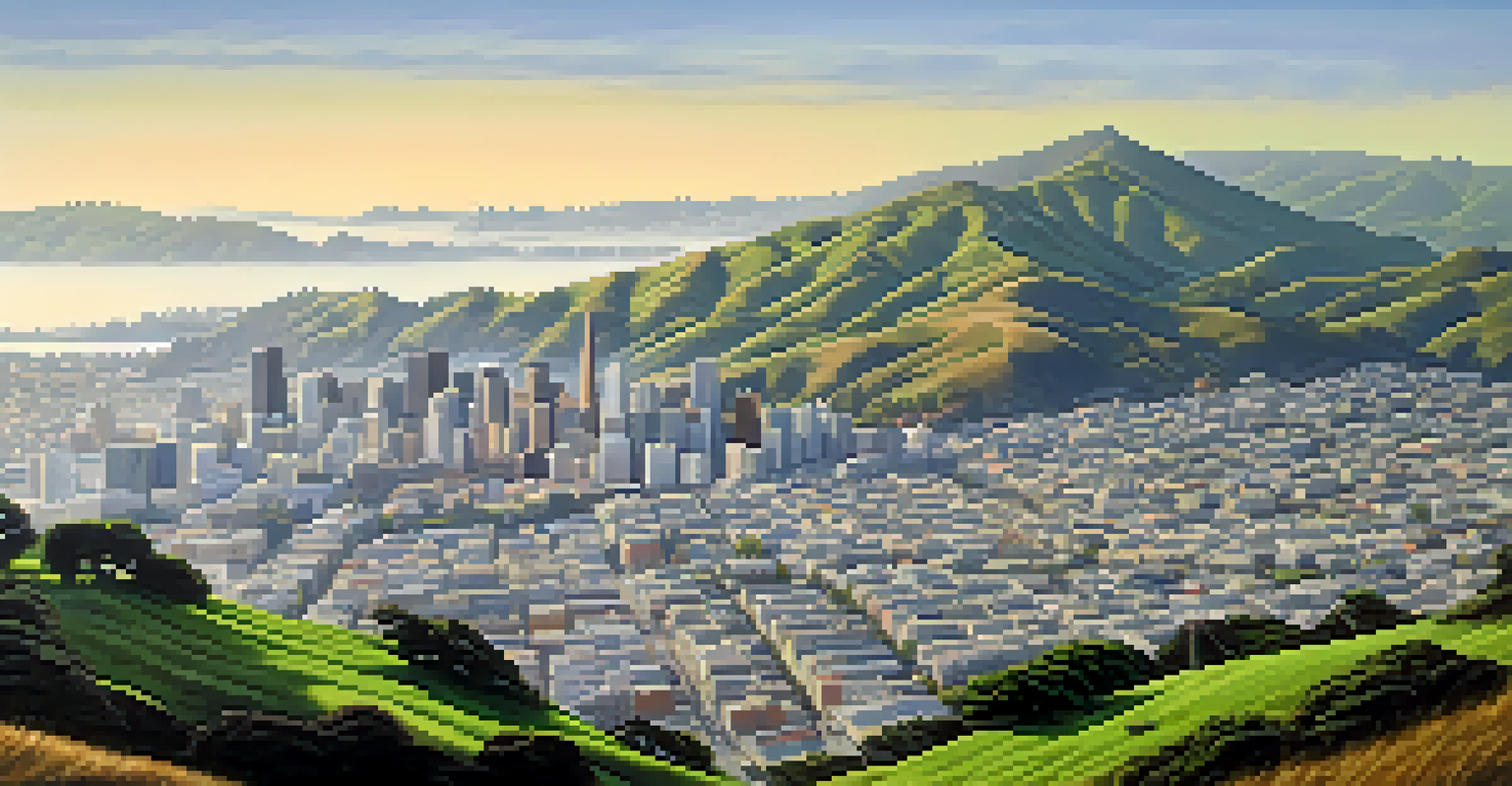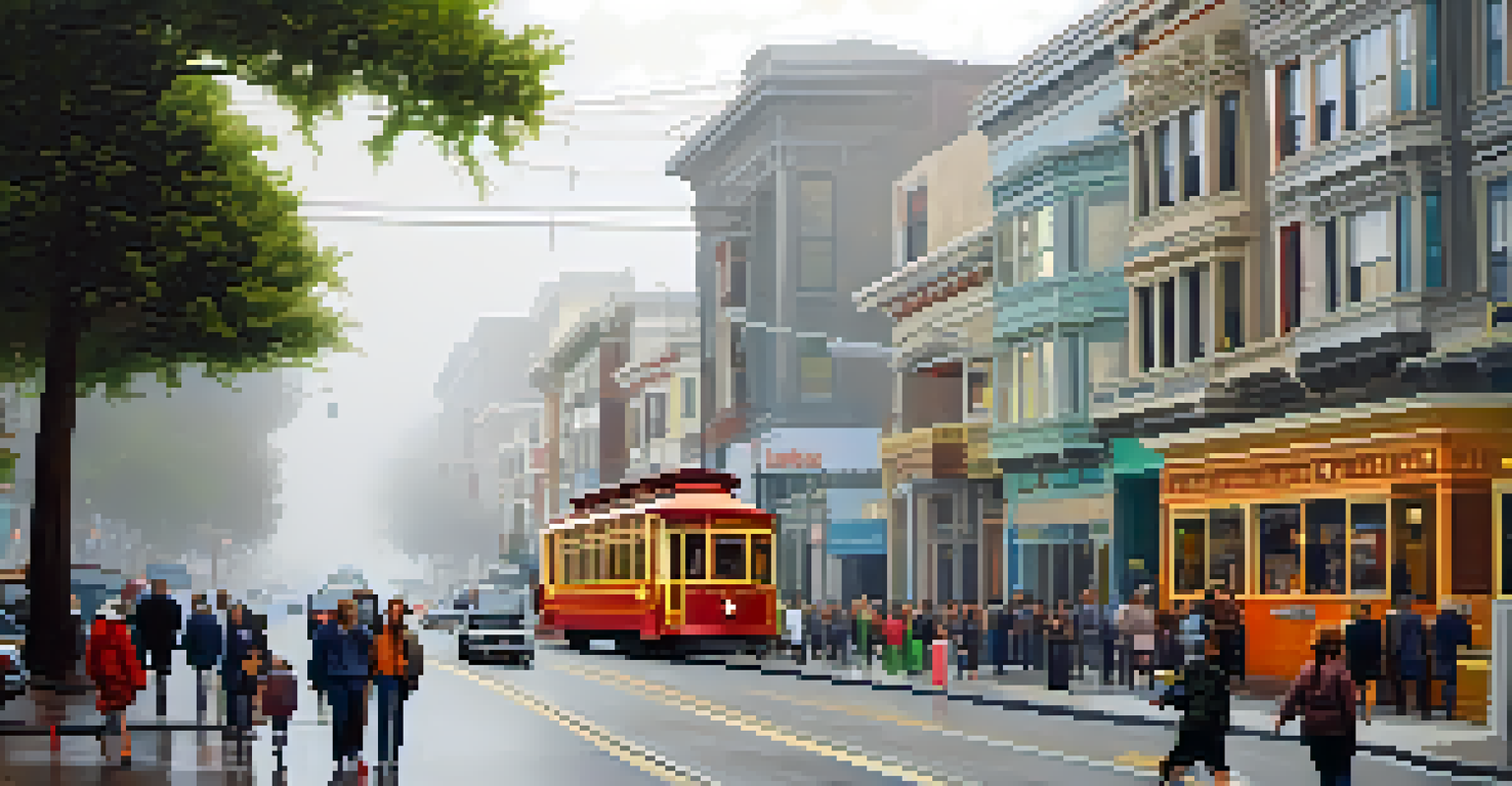Exploring Microclimates: San Francisco's Weather Variations

What Are Microclimates and Why Do They Matter?
Microclimates are small areas with distinct weather patterns that differ from the surrounding region. In San Francisco, this phenomenon is particularly pronounced due to its unique geography and topography. The city's hills, valleys, and proximity to the ocean create varied temperatures and humidity levels, making it a fascinating case study for weather enthusiasts.
The climate is what you expect; the weather is what you get.
Understanding microclimates is essential for residents and visitors alike. For example, a sunny day in the Mission District can feel drastically different from the foggy chill of the Richmond District just a few miles away. This variability affects everything from daily wardrobe choices to gardening and event planning.
By grasping the concept of microclimates, we can better appreciate the city's diverse neighborhoods. Each area has its own character, influenced not only by culture and history but also by its specific weather conditions.
The Role of Geography in San Francisco's Weather
San Francisco's unique geography plays a significant role in its microclimates. The city is surrounded by water on three sides, which moderates temperatures and contributes to the infamous fog. The hills that rise throughout the city create natural barriers, causing variations in wind patterns and temperature as you move from one neighborhood to another.

For instance, the Presidio, located near the Golden Gate, often experiences cooler temperatures and more fog compared to the warmer and sunnier South of Market area. This geographical diversity shapes not only the weather but also the lifestyles of those who live in different parts of the city.
Microclimates Shape Local Experiences
San Francisco's distinct microclimates create varied weather conditions that influence daily activities, from wardrobe choices to gardening.
Understanding these geographical influences helps us navigate the city more effectively. Whether you're planning a picnic or a beach day, knowing the local microclimate can make all the difference in your experience.
The Impact of Ocean Currents on Local Weather
Ocean currents significantly influence San Francisco's weather patterns, particularly the California Current, which brings cold water from the north. This cold water has a cooling effect on the air, leading to the cool, foggy conditions that the city is famous for. The contrast between warm inland temperatures and cool ocean air creates the perfect recipe for fog formation.
In California, they don’t have a winter. They have a rainy season and a dry season.
As the warm air rises and cools, it condenses into fog, enveloping neighborhoods like the Sunset and Richmond. This phenomenon can occur unexpectedly, catching residents and tourists off guard. It's a reminder of how dynamic and ever-changing San Francisco's weather can be.
Thus, understanding the role of ocean currents helps us appreciate the city’s distinctive climates. It also serves as a reminder to always carry a light jacket, even on sunny days!
How Elevation Affects Neighborhood Weather
Elevation plays a critical role in San Francisco's microclimates. As you ascend the city's iconic hills, temperatures tend to rise, and fog may give way to clearer skies. Neighborhoods located at higher elevations, such as Twin Peaks, often enjoy more sunshine than those at lower altitudes, like the Bayview.
This elevation difference can be particularly striking during summer months when fog blankets lower areas while higher neighborhoods bask in sunlight. It creates a unique experience for residents; those living in the fog can often see the sun shining just above them, almost like a different world.
Geography Drives Weather Variations
The city's unique geography, including its hills and proximity to the ocean, leads to significant differences in temperature and fog between neighborhoods.
Recognizing how elevation impacts weather not only enriches our understanding of San Francisco but also informs our outdoor plans. Whether you're hiking or just enjoying a day in the park, being aware of elevation can help you dress appropriately and stay comfortable.
Seasonal Variations in San Francisco's Microclimates
San Francisco experiences notable seasonal variations that further highlight its microclimates. Winters can be cool and rainy, but temperatures can vary dramatically from one neighborhood to another. For instance, while the Embarcadero may be brisk, neighborhoods like Noe Valley can feel surprisingly warm during the same period.
Summer introduces another layer of complexity, with fog rolling in from the ocean, especially during the evenings. This results in a classic San Francisco phenomenon known as 'June Gloom,' where many areas experience cooler temperatures and overcast skies, while inland areas enjoy bright sunshine.
These seasonal shifts emphasize the importance of flexibility when planning activities in the city. Knowing what to expect can help you choose the right time and place for your outings, ensuring you make the most of the city's diverse weather.
The Role of Urban Development in Microclimate Changes
Urban development in San Francisco has a profound impact on local microclimates. As neighborhoods evolve, changes in land use, building materials, and vegetation can alter wind patterns, temperature, and even humidity levels. For example, high-rise buildings can create wind tunnels, affecting the microclimate in their vicinity.
Moreover, the loss of greenery due to urbanization can lead to heat islands, where temperatures rise in densely built areas. This phenomenon is especially noticeable in neighborhoods like the Financial District, where concrete and asphalt dominate the landscape.
Urban Development Alters Climates
Changes in land use and urbanization impact local microclimates, resulting in phenomena like heat islands and altered wind patterns in densely built areas.
Being aware of how urban development affects microclimates helps residents engage with their environment. It encourages community discussions about sustainable practices and the importance of preserving green spaces in the city.
Tips for Navigating San Francisco's Microclimates
Navigating San Francisco's microclimates can be a breeze with a few handy tips. First, layering your clothing is key; dressing in layers allows you to adjust to the shifting temperatures throughout the day. A light jacket, a sweater, and a t-shirt can be your best friends when venturing across different neighborhoods.
Additionally, checking the weather forecast for specific areas can provide valuable insights. Many weather apps now offer hyper-local forecasts, which can help you determine whether to expect fog or sunshine in your destination.

Lastly, don't hesitate to explore the city's diverse neighborhoods. Experiencing the unique weather variations firsthand is part of what makes San Francisco such a captivating place to live and visit.